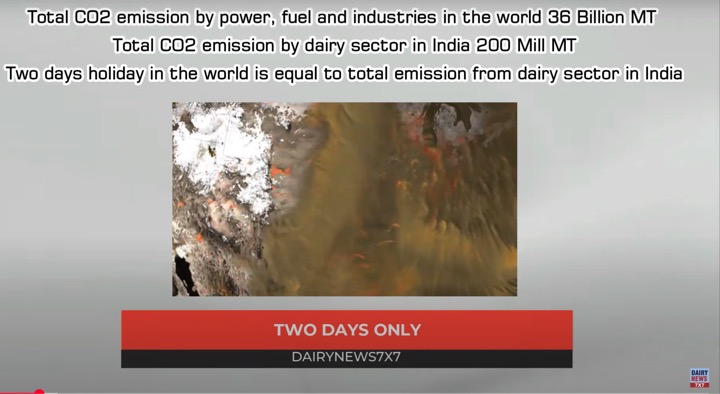The current guidelines may not inspire confidence among farmers on entering into collective enterprises.Prime minister Modi in his address commemorating 75 years of the UN’s FAO, reiterated India’s commitment to enhance its farmers’ income. He also reiterated the resolve to create 10,000 additional Farmer Producer Organisations (FPOs), one of the main pillars in the proposed transformation of the agri-economy. Will his futuristic vision result in creation of successful farmer-owned enterprises like Amul?
The ministry of agriculture (MoA) responded quickly to this decision, with comprehensive Operational Guidelines (available on their website) on creating and supporting 10,000 FPOs by 2023-24. Will the approach outlined here help achieve the objective of setting up viable and vibrant business organisations of farmers?
Historical perspective
Let me start with a brief history. The Companies Act 1956 was amended in 2002 to enable registration of producer companies (part IX A of the Act). The provision to register producer companies was retained in the new Act of 2013, with a caveat under Section 465 stating that Part IXA of the Act will remain till a special Act is enacted for producer companies. The message seemed to be ‘you are not in the same league, but you can exist ’, and therein lies a problem. The Small Farmers Agri-business Consortium (SFAC) was tasked with the formation of FPCs in 2010-11 under various schemes of MoA . NABARD was tasked with the formation of 2,000 FPOs in 2014-15 with a budgetary support of Rs 200 crore. These efforts started bearing fruit from 2014.
A comprehensive study by Neti, Govil and Rao (Azim Premji University) throws up excellent data and offers valuable insights. According to this, 7,374 FPCs have been registered till 2019, of which 6,926 are active (average number of members is 582).While 445 FPCs were registered till 2013, 6,000 were registered during 2016-19. As usual, some regions grew faster. Four states, Maharashtra, Madhya Pradesh, Karnataka and Tamil Nadu, account for about 50% of FPCs . The top 20 companies accounting for more than half of the paid up capital are primarily in dairy and coconut; the largest, Visakha Dairy, transformed from a co-operative. The second, Sahyadri, is primarily in fruits.
The big dream of 10000 FPOs
The government plans to add 10,000 FPOs (most of them FPCs), with financial and technical support amounting to Rs 4,496 crore during 2021-24 and with a possible addition of another Rs 2,369 crore during 2025-28. The process is detailed in the guidelines. Let us take a look at the main elements of the guidelines.
There are three designated implementation agencies (IAs): SFAC, NCDC and NABARD. SFAC is for Chapter IX Producer Companies, NCDC for co-ops and NABARD for both. Of these, co-operatives do not seem to stand a chance (in spite of the 97th amendment to the Constitution) since the guidelines state ‘co-operatives are to be insulated from all kinds of interference… with suitable provisions in bye-laws’ (emphasis added) to qualify. It is well known that ‘interference’ in co-ops come from the state government. How will it be possible for a set of farmers to insulate themselves from government (including bureaucratic) interference!
The scheme’s central theme is a ‘production-cluster based approach’, but has multiple objectives, inter alia, ‘one district, one product’ and 15% FPOs in aspirational districts. Identification of the ‘produce-cluster area’ is to be done with ‘inputs’ from agencies at the district level to the national level and approved at fairly high levels in the government.
Role of implementing agencies
The model appears to be this: There will be three implementing agencies, namely, SFAC,NCDC and NABARD, and two expert support organisations, viz. a National Project Management Agency (NPMA) to be set up in SFAC and a number of cluster-based business organisations (CBBOs) under this to support FPOs. These, in my reckoning, are consultants. Then, there are empowered committees to approve projects and sanction money.
These are: National-level Project Management Advisory & Fund Sanctioning Committee (N-PMAFSC), state level consultative committee (SLCC) and district level monitoring committee (D-MC). In addition, there are other ‘inter and intra’ committees. Interestingly, one of the functions of the national committee is to ‘allocate produce clusters… to implementing agencies for formation and promotion of FPOs’. A clear command and control structure, with top down planning!
What about farmers? Three-hundred or more farmers (less in North East and hilly areas) can form an FPO to qualify for assistance. Financial grants to the tune of `18 lakh per FPO for managerial support and equity grant assistance of Rs 2,000 per farmer not exceeding Rs 15 lakh per FPO are provided. In addition, they can get technical assistance, training support, etc. They will also have access to the Credit Guarantee Fund. However, prior approvals are needed at every step!
Economies of scale
My experience tells me that FPOs succeed when producers with a common economic interest organise themselves to achieve economies of scale. The government has to be an enabler and create opportunities for entrepreneurship and innovation. True, FPOs need help along the way, from registration to market access. Most FPOs have struggled with marketing (or market linkage), compliance with company law provisions and access to finance. Successful FPOs have used their strength in production and large membership to access the markets either directly or through major market players (e.g., Mother Dairy) and have adopted a ‘fork to farm’ model. If the idea of an FPO is to give the farmers an advantage in the market and better value capture, confining them to pre-defined clusters identified by CBBOs and keeping them small is a bad start.
The current set of guidelines may not inspire confidence among the farmers to venture into a collective entrepreneurial mode. They may find it hard to negotiate the bureaucratic maze. They may be better off with a larger number of farmers and get connected to the nearest market or to large market players!
The way forward? Give them more operational freedom, and set up an enabling ecosystem!
The author is Former secretary, food & agriculture, GoI, & former chairman, NDDB
























